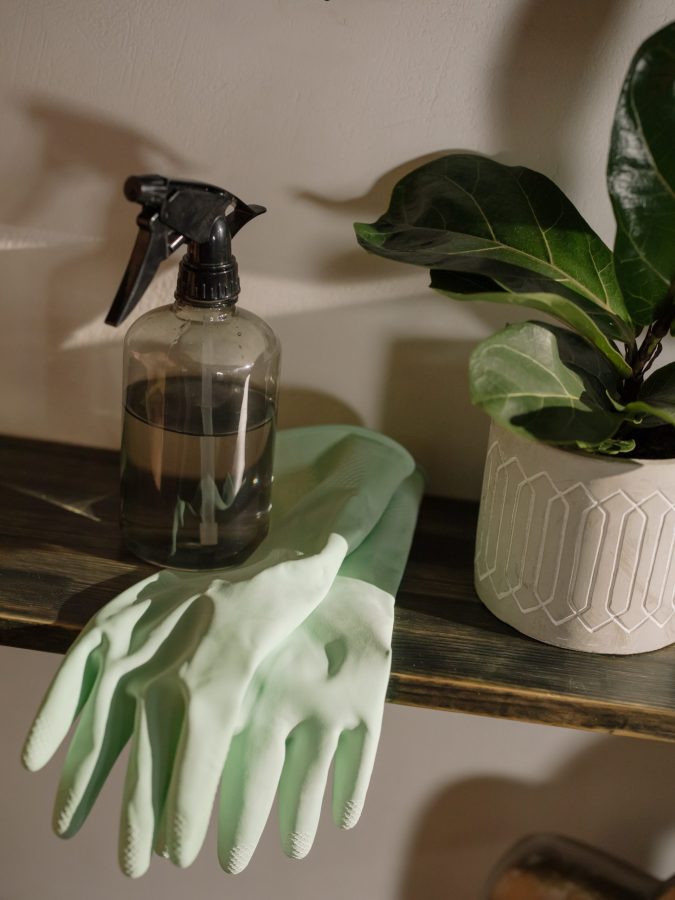A recent surge of COVID-19 positive cases among UCSD staff and students has caused shortages in isolation housing.
Even though the third year of the COVID-19 pandemic is underway, life at UC San Diego appears to be returning to the pre-COVID era of normalcy. Dining halls and lecture halls are packed, Ridge Walk is always teeming with people walking, biking or scootering and large events like the Sun God Festival are taking place. For a while, even the mask mandate had been lifted.
However, just as the multiple COVID test vending machines on campus were starting to seem like relics of another time, cases began surging again. The surge has sent UCSD back to Phase 1, with masking required everywhere on campus. The UCSD COVID-19 Daily Dashboard indicates that on April 28, positive cases — including students living both on and off-campus — spiked to 107. The spike appears to be receding, however, with May 12 reporting 65 positive cases.
Since UCSD has been dealing with COVID for over two years now, the policies and processes pertaining to testing and isolating have become more streamlined. Although there is occasional chaos involving isolation housing, on-campus students with roommates are generally able to obtain isolation housing.
Revelle College Freshman Natasha Jhalani, who lives on-campus with a roommate, received isolation housing when she contracted COVID-19 at the end of April. She was exposed to COVID-19 and thereafter took three vending machine PCR tests, which all returned negative. However, she had been experiencing symptoms, so she went to Student Health Services to get a rapid test done, which came back positive.
She was taken to the La Jolla Marriott Residence Inn later that day, on April 27, and was placed in a two-story suite with a kitchen, living area and two bedrooms with each having an attached bathroom. Jhalani got there in the late afternoon and settled in, and decided to go to bed early.
Later that night, around 11:30 p.m., Jhalani was woken up by knocking. It turned out that due to the surge in cases, the Marriott Residence Inn was at capacity. Since Jhalani had been placed in a larger room with an extra bed, she was being paired with a roommate. Although this felt abrupt and a little scary, she says that the spaciousness of the living space made it a comfortable arrangement.
The next morning, other on-campus students who had tested positive had to be taken by bus to the Marriott Residence Inn in Oceanside, since the La Jolla one was completely full. UCSD booked the entire fourth floor of the hotel for COVID-positive students to increase isolation housing capacity. That day, students also received an email saying students living on-campus with roommates would be given priority for isolation housing (but, if students on-campus tested positive and their roommate was already in isolation housing, then those students would have to isolate in their on-campus dorms). Off-campus students with roommates would not be given priority isolation housing, regardless of roommates or apartment mates.
Jhalani says that the food delivery service that UCSD provided for students could have been better. The process of ordering food was a little confusing and inconvenient because students had to order a day in advance, but they did not know how long they would be in isolation (if they tested negative after day six, they could leave early). She also feels that the delivery could have been more frequent (food was only delivered between 5 p.m. and 7 p.m. daily).
However, the woman in charge of food delivery was readily available by phone and was accommodating to late requests; she cared about students’ health and well-being.
UCSD also delivered medicine and other groceries to rooms, and Jhalani used it as an opportunity to cook.
Jhalani says that compared to how other schools deal with COVID-19 and isolation housing, UCSD does a significantly better job. For instance, in an opinion piece from the Daily Bruin, the writer criticizes UCLA’s disorganized COVID-19 policies and isolation procedures.
While all universities presumably have their students’ safety and well-being as first priority, these past two years have exemplified flaws in their respective bureaucracies. Universities have adapted; yet, there remains chaos and confusion (to a lesser extent at UCSD, as Jhalani states) regarding COVID-19 policies and procedures.
Although COVID-19 seems like a fading phenomenon, the recent surge is evidence that COVID is now a seemingly more permanent (but hopefully less daunting) part of our lives. Despite the loneliness and boredom that come with isolation housing, Jhalani says testing and isolating is important for keeping cases under control and limiting surges.
“If you end up in isolation, just make sure to call your friends and family,” Jhalani told The UCSD Guardian. “Rest a lot, too.”
Image courtesy of Creative Commons













